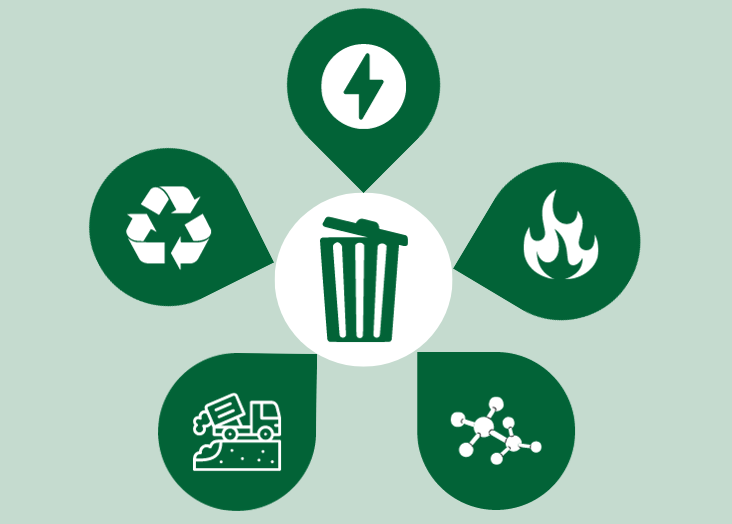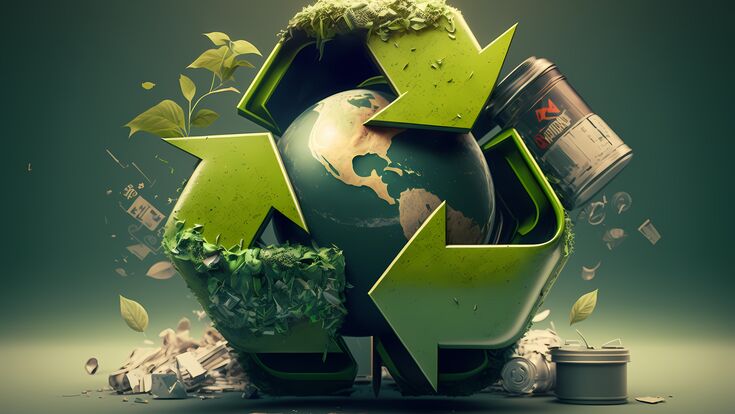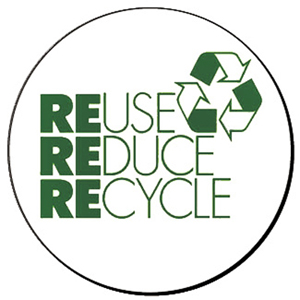Just How Recycling Lives Services Make a Distinction in Sustainable Waste Administration
Just How Recycling Lives Services Make a Distinction in Sustainable Waste Administration
Blog Article
Checking Out Various Types of Waste in Modern Waste Monitoring Systems
The modern landscape of waste management entails navigating a complicated array of waste types, each needing specialized handling and disposal methods to alleviate ecological influences. Local solid waste, contaminated materials, electronic waste, and natural waste each present distinct difficulties and chances for source recuperation. Cutting-edge solutions such as smart waste bins and waste-to-energy technologies are becoming essential tools in enhancing efficiency and sustainability. Comprehending these waste types is important for promoting public understanding and encouraging active participation in sustainable practices. What strategies can effectively address these diverse kinds of waste while advertising a circular economy?
Metropolitan Solid Waste
Municipal strong waste, frequently described as house garbage or waste, incorporates a range of discarded products produced by domestic, business, and institutional sources within a municipality. This waste stream usually includes items such as product packaging, food scraps, lawn trimmings, paper, plastics, fabrics, and disposed of house goods. The management of municipal strong waste is a vital component of city planning and public health and wellness, necessitating effective collection, transport, and disposal systems.
Efficient waste monitoring systems are developed to decrease environmental effect while making best use of resource healing. This frequently entails a combination of approaches including recycling, composting, and landfilling. Reusing programs target products like paper, glass, steels, and certain plastics, diverting them from garbage dumps and reestablishing them right into the production cycle. Composting natural waste, such as food scraps and backyard trimmings, not just reduces landfill usage however additionally produces important dirt amendments.
Communities must likewise resolve the financial and logistical challenges related to waste administration. Implementing pay-as-you-throw systems, enhancing public awareness, and purchasing innovation can substantially improve waste diversion prices. By integrating these techniques, districts can cultivate lasting areas, decrease greenhouse gas emissions, and conserve all-natural sources.
Hazardous Waste

Efficient contaminated materials administration includes a number of essential actions: recognition, therapy, disposal, and partition. Recognition involves the classification of waste based upon its unsafe buildings. Partition ensures that harmful products are stored individually from non-hazardous waste to stop cross-contamination. Therapy techniques, such as chemical neutralization, incineration, and stablizing, are used to lower the toxicity, quantity, or wheelchair of the waste. Ultimately, disposal choices, consisting of secure landfills and below ground storage space, are picked to ensure lasting control.
Governing frameworks, such as the Source Conservation and Recuperation Act (RCRA) in the USA, provide guidelines and criteria for contaminated materials monitoring. Adherence to these guidelines, combined with advancements in waste treatment technologies, is crucial in reducing the dangers related to contaminated materials.
Digital Waste
Electronic waste, generally described as e-waste, stands for a quickly expanding obstacle in waste administration systems around the world. This kind of waste incorporates thrown out digital devices and equipment such as mobile phones, computer systems, tvs, and other electronic home appliances. The fast pace of technological development, paired with lowering item lifespans and customer need for the most recent gadgets, has actually exponentially boosted the quantity of e-waste produced yearly.
E-waste is especially bothersome as a result of its intricate composition, usually consisting of harmful materials like cadmium, mercury, and lead, which present considerable environmental and health and wellness threats otherwise effectively managed. Alternatively, e-waste additionally consists of useful products such as silver, gold, and copper, which can be recovered and reused. The dual nature of e-waste-- both unsafe and valuable-- necessitates specialized handling, recycling, and disposal processes.
Reliable e-waste monitoring includes rigorous regulatory frameworks, durable collection systems, and advanced reusing innovations. Public awareness and engagement are crucial, as improper disposal techniques, such as unlawful disposing and casual recycling, worsen environmental contamination and health and wellness threats. Subsequently, improving get redirected here e-waste management methods is essential for reducing eco-friendly influence and recouping useful sources in a significantly digital world.

Organic Waste
Organic waste, comprising cooking area scraps, lawn trimmings, and farming deposits, stands for a considerable part of the international waste stream. This sort of waste is biodegradable, implying it can be damaged down by microbes right into easier natural substances. Regardless of its possibility for natural disintegration, improper monitoring of organic waste can lead to negative environmental effects, including the emission of greenhouse gases such as methane, which contribute to climate adjustment.
Effective administration of organic waste is crucial for lessening these environmental impacts (recycling browse around these guys lives services). Composting is a widely taken on method, changing organic waste into nutrient-rich compost that can enhance dirt health and agricultural performance. Furthermore, anaerobic digestion is an emerging modern technology that transforms natural waste right into biogas, an eco-friendly energy source, and digestate, which can be used as plant food
Municipalities and waste monitoring entities must apply robust natural waste collection and therapy programs to take full advantage of the advantages of these procedures. Public education campaigns can also play a pivotal function in motivating households and services to different organic waste from other sorts of waste. By prioritizing the management of organic waste, cultures can decrease land fill usage, reduced greenhouse gas discharges, and produce beneficial results for farming use.

Innovative Waste Monitoring
In the world of waste management, cutting-edge methods are transforming just how cultures manage their refuse, aiming for sustainability and performance. These improvements incorporate an array of modern technologies and techniques that improve reusing prices, decrease landfill dependence, and lower ecological impact. One prominent technology is the application of wise waste containers equipped with sensors that keep an eye on fill levels and enhance collection routes. This not just lowers gas intake but likewise decreases greenhouse gas discharges.
One more notable advancement is the adoption of waste-to-energy (WtE) technologies. By transforming non-recyclable click here for more info waste into functional energy with procedures such as incineration and anaerobic digestion, WtE minimizes land fill problem and gives an eco-friendly power resource. Additionally, improvements in chemical recycling permit the breakdown of intricate plastics right into their initial monomers, enabling the development of brand-new, high-grade plastic items.
Furthermore, the round economic situation model is obtaining grip, highlighting the design of products and systems that prioritize reusability and resource efficiency. This holistic method urges markets to lessen waste generation from the start. With these ingenious approaches, modern-day waste administration systems are not only resolving the prompt challenges of waste disposal yet additionally paving the means for a more sustainable future.
Conclusion
An extensive understanding of municipal strong waste, harmful waste, digital waste, and organic waste, coupled with the application of ingenious waste monitoring remedies, is necessary for reducing ecological effects. Incorporating innovations such as smart waste bins and waste-to-energy systems can enhance efficiency and sustainability. Effective waste management techniques not just foster source recuperation yet likewise advertise public awareness and involvement, eventually contributing to the advancement of a circular economic climate.
The contemporary landscape of waste management involves navigating a complex selection of waste kinds, each calling for specialized handling and disposal approaches to alleviate ecological effects. Community solid waste, hazardous waste, digital waste, and natural waste each present distinct challenges and possibilities for source recovery.Electronic waste, generally referred to as e-waste, stands for a quickly growing obstacle in waste administration systems worldwide. Through these cutting-edge approaches, contemporary waste management systems are not just attending to the instant challenges of waste disposal yet likewise paving the way for a more lasting future.
A detailed understanding of community strong waste, harmful waste, electronic waste, and organic waste, coupled with the application of innovative waste management options, is necessary for mitigating ecological effects. (recycling lives services)
Report this page